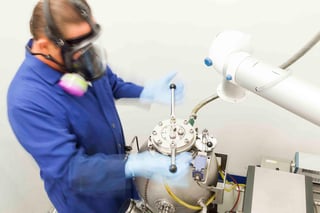JHAs, JSAs, PHAs, DHAs... All Things Safety Hazard and Process Safety
The August issue of Safety + Health Magazine includes an informative piece "Job Hazard Analysis/Job Safety Analysis: Procedure Goes By Various Names But Reaps Many Benefits, Proponents Say". Since our work in the process chemical and nuclear safety engineering industries includes Process Hazards Analysis (PHA) and Dust Hazards Analysis (DHA), the look at Job Hazard Analysis (JHA) and Job Safety Analysis (JSA) is obviously, akin. To throw another acronym in the mix - Process Safety Management (PSM) should be included in this important list of tools.
What do all these tools do? Identify, prevent and mitigate possible accidents and injury. Whether the Authority Having Jurisdiction (AHJ) is the National Safety Council (NSC), Occupational Health and Safety Administration (OSHA), National Fire Protection Association (NFPA), ASTM, European Committee for Standardization (EN, REACH) etc., the most important step for all, is a process.
- From beginning to end, every worker entering a lab, a workshop, a plant should have a procedure.
- Every test and task should have a procedure.
- This does not need to be an extensive load of paperwork. In fact, it should be simple and clear. It should be reviewed in writing as well as visually and verbally.
- Every procedure needs a set review time - a week, a month, a year. This is vital.
- Every procedure should involve the worker'(s') direct input and feedback.
Being in the unique position as an engineering lab that conducts testing specifically for runaway reactions and severe accident prevention worldwide, you can imagine there are quite a few among us who thrive on considering all possible worst case scenarios for every situation. Temperature, materials, air quality, vacuums and other elemental considerations, liquids, gases, vapors, human behavior, possible equipment behaviors and movements, even anticipation of the unknown (say, a customer or co-worker enters your lab or work area unexpectedly - do they need safety goggles or gear? Have they contaminated the area or a procedure?)
Speaking of someone walking into your work area - let others from your organization routinely in as part of your procedures. If you bring coworkers in from other departments in the form of a team building activity/tour you accomplish a couple of things:
1) Provides fresh eyes on routines and behaviors ("Hey, that flooring looks slippery, do you ever get spills there?)
2) Includes, motivates and educates personnel in the team approach to safety and your company's altruistic safety goals.
3) Reinforces existing procedures.
If you are diligent and document, you will most likely cover all AHJs concerns. This becomes the norm, the lifestyle and the meaning of your work.
For more information regarding PHAs, PSM, DHAs and more, please contact me at afauske@fauske.com, 630-887-5213. www.fauske.com



